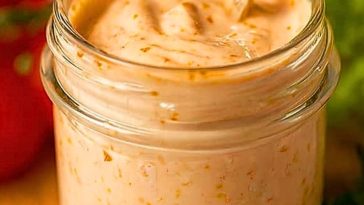I’ve always believed that mastering the simplest dishes is the true mark of a great home cook. One of the first things I ever learned to make on my own was scrambled eggs. Over the years, I’ve tried countless techniques—some involving double boilers, others demanding endless stirring—but nothing surprised me more than discovering how easy and delicious microwave scrambled eggs can be.

Microwave scrambled eggs are perfect for rushed mornings or when you’re craving something warm, fluffy, and satisfying without dirtying a single pan. It might sound like a shortcut (and it is), but it’s also surprisingly foolproof. This method delivers creamy, soft curds in just minutes—and once you try it, you might never go back to the stovetop again.
Why You’ll Love This Microwave Scrambled Eggs Recipe
This recipe isn’t just about convenience—it’s about delivering quality with speed. The texture is velvety, the taste rich and buttery, and the cleanup? Practically nonexistent. Whether you’re a college student with only a microwave or a busy professional trying to cut time in the morning, this is the kind of hack you’ll come to rely on. Plus, you can personalize it endlessly with toppings, herbs, or a slice of buttered toast underneath.
What Kind of Bowl Should I Use for Microwave Scrambled Eggs?
When it comes to making scrambled eggs in the microwave, the bowl you choose plays a bigger role than you might think. I always go with a microwave-safe ceramic or glass bowl that’s deep enough to let the eggs rise and fluff up without spilling over. Shallow bowls tend to dry the edges too quickly, while plastic can sometimes warp or give off an odd smell—so I steer clear of those. If you’re cooking more than two eggs, a larger bowl will give the mixture room to expand without making a mess.
Options for Substitutions
One of the best things about this recipe is its adaptability. You can keep it basic or dress it up depending on what you have in your fridge.
- Milk or Cream: If you’re out of milk, try water, sour cream, or even Greek yogurt. Each gives a slightly different texture, but all work beautifully.
- Butter: Can’t (or don’t want to) use butter? Olive oil, margarine, or even a splash of cream will help keep the eggs moist.
- Eggs: For a plant-based version, a liquid egg substitute like JUST Egg works well using the same method.
- Cheese: From cheddar to feta to a sprinkle of Parmesan, almost any cheese can melt into the eggs for extra richness.
- Add-ins: Chopped spinach, pre-cooked bacon bits, or sliced scallions add flavor without adding complexity.
Feel free to experiment—microwave scrambled eggs are the perfect canvas.
Ingredients for This Microwave Scrambled Eggs Recipe
- Eggs
The heart of the recipe. Fresh, large eggs give you the best flavor and texture. I usually go with two for a single serving. - Milk
A splash of milk helps the eggs stay creamy and fluffy. It also slightly mellows the richness for a smoother bite. - Butter
A small pat of butter adds flavor and helps keep the eggs tender. It also gives that classic, buttery scrambled egg aroma. - Salt
A pinch is all you need to bring out the natural taste of the eggs. Add before or after cooking depending on your preference. - Black Pepper
For a subtle kick and earthy depth. I like to add it right before serving. - Fresh Herbs (optional)
Parsley, chives, or dill can brighten the dish with fresh flavor and a pop of color. - Grated Cheese (optional)
A small handful of shredded cheese melts into the eggs for extra richness and indulgence.

Step 1: Crack and Whisk
Crack two eggs into a microwave-safe bowl. Add a splash of milk (about 1 tablespoon), a pinch of salt, and a small pat of butter. Use a fork or small whisk to beat the mixture until fully combined and slightly frothy.
Step 2: Microwave in Short Bursts
Place the bowl in the microwave and cook on high for 30 seconds. Remove the bowl and give the eggs a quick stir, scraping the sides to mix in any cooked bits.
Step 3: Repeat and Stir
Microwave for another 20–30 seconds. Stir again, gently folding the curds toward the center. Keep the motion light to preserve the fluffiness.
Step 4: Final Burst
Return to the microwave for a final 15–30 seconds, depending on your desired consistency. Stop when the eggs are mostly set but still slightly glossy—they’ll finish cooking from residual heat.
Step 5: Finish and Serve
Give the eggs a final stir, season with black pepper, and top with herbs or cheese if desired. Serve immediately, ideally over toast or alongside your favorite breakfast items.
How Long to Cook the Microwave Scrambled Eggs
The total cooking time depends on the strength of your microwave, but typically, the eggs are done in 1.5 to 2 minutes. It’s best to microwave in short intervals—starting with 30 seconds, then 20, then smaller bursts—so you can control the texture and prevent overcooking. Remember, the eggs will continue to cook slightly from residual heat even after the microwave stops.
Tips for Perfect Microwave Scrambled Eggs
- Use a deep, microwave-safe bowl: This gives the eggs room to expand and prevents overflow.
- Don’t overbeat the eggs: Whisk just until the yolks and whites are fully combined and slightly frothy.
- Microwave in intervals: Stirring between each round of cooking helps break up the curds and keeps texture creamy.
- Stop while still slightly soft: Let the residual heat finish the cooking—this is the key to moist, fluffy eggs.
- Season at the end: Especially with salt, adding it too early can sometimes cause watery eggs.
- Add cheese during the last stir: It will melt perfectly into the hot eggs without clumping or burning.
Watch Out for These Mistakes While Cooking
- Overcooking
The most common mistake. Eggs in the microwave can go from perfect to rubbery in seconds. Always stop just before they look fully set. - Skipping the stirring
Without stirring between intervals, the eggs can cook unevenly, leaving you with dry edges and undercooked centers. - Using the wrong bowl
A shallow or small bowl won’t give the eggs room to rise and cook properly—plus, you risk a messy overflow. - Microwaving all at once
Cooking in one continuous burst doesn’t allow the eggs to form soft curds. Break it up into short sessions with gentle mixing. - Forgetting to grease
Even with butter in the mix, a light coating of cooking spray on the bowl can help with easy cleanup. - Adding veggies or cheese too early
These can release moisture or burn if added from the start. Fold them in during the last stir for the best texture.
What to Serve With Microwave Scrambled Eggs?
Avocado Toast
A simple slice of toast topped with mashed avocado makes the perfect creamy, crunchy base for your eggs.
Breakfast Sausage or Bacon
Pairing your eggs with savory, smoky sides adds substance and flavor contrast.
Fresh Fruit Salad
A refreshing bowl of mixed berries or melon balances the richness of the eggs beautifully.
Hash Browns or Roasted Potatoes
Crispy potatoes bring texture and turn your scrambled eggs into a hearty breakfast.
Grilled Tomatoes or Sautéed Spinach
Quick veggies on the side make it feel more like a full meal while adding nutrients.
Toasted English Muffin or Bagel
A toasted base is always a good idea—slather with butter, jam, or cream cheese.
Yogurt Parfait
If you’re after a balanced breakfast, pair the eggs with a sweet, creamy parfait layered with granola and fruit.
Storage Instructions
Microwave scrambled eggs are best enjoyed fresh, but if you’ve made extra, they can be stored. Let the eggs cool completely, then transfer them to an airtight container. Keep them in the fridge for up to 2 days. To reheat, microwave in 15-second intervals, stirring in between, just until warmed through. Be careful not to overheat, or the texture will turn rubbery.
Freezing isn’t recommended for this recipe, as the eggs tend to lose their softness and become spongy when thawed and reheated.
Estimated Nutrition
Here’s the approximate nutritional breakdown for 1 serving (2 eggs, 1 tbsp milk, 1 tsp butter, pinch of salt and pepper):
- Calories: 180
- Protein: 12g
- Fat: 14g
- Saturated Fat: 5g
- Carbohydrates: 1g
- Fiber: 0g
- Sugar: 1g
- Cholesterol: 370mg
- Sodium: 160mg
Adding cheese or toppings will slightly raise the calorie and fat content, so adjust based on what you include.
Frequently Asked Questions
Can I make scrambled eggs in any microwave?
Yes, any standard microwave will work. You may need to adjust the cooking time depending on the wattage.
Do I need to grease the bowl first?
It’s not required if you’re adding butter to the eggs, but a quick spritz of cooking spray helps with cleanup.
Why are my eggs rubbery?
They were likely overcooked. Microwave eggs cook fast—always stop when they look slightly underdone.
Can I add veggies to the eggs?
Yes, but make sure they’re pre-cooked or quick-cooking (like chopped spinach) and add them toward the end.
Is milk necessary in scrambled eggs?
Not at all. Milk makes them creamier, but water, cream, or no liquid at all can still yield tasty results.
How do I know when the eggs are done?
When they look mostly set but still glossy and soft in the center, they’re done. They’ll finish cooking from the heat left in the bowl.
Can I double the recipe?
Yes! Just use a larger bowl and expect to add 30–60 more seconds to the total cooking time, stirring more frequently.
Are microwave scrambled eggs healthy?
They’re a protein-rich, low-carb option. Keep them healthy by avoiding too much butter, cheese, or salty add-ins.
Conclusion
Microwave scrambled eggs are a true kitchen lifesaver—fast, flexible, and surprisingly good. Whether you’re trying to simplify your morning routine or need a quick bite between meetings, this method delivers satisfying results with hardly any mess. Once you get the hang of it, you’ll find yourself coming back to it again and again. Give it a try—you might just be surprised by how delicious convenience can be.

Microwave Scrambled Eggs
- Prep Time: 2 minutes
- Cook Time: 2 minutes
- Total Time: 4 minutes
- Yield: 1 serving 1x
- Category: Breakfast
- Method: Microwave
- Cuisine: American
- Diet: Vegetarian
Description
Fluffy, creamy, and ready in under two minutes, these microwave scrambled eggs are a lifesaver for busy mornings. With minimal cleanup and endless customization, this method gives you soft, velvety eggs every time.
Ingredients
2 large eggs
1 tablespoon milk
1 teaspoon butter
1 pinch salt
1 pinch black pepper
1 tablespoon grated cheese (optional)
1 teaspoon chopped fresh herbs (optional)
Instructions
1. Crack the eggs into a microwave-safe bowl.
2. Add milk, butter, and salt. Whisk until fully combined and slightly frothy.
3. Microwave on high for 30 seconds.
4. Remove and stir, scraping the sides of the bowl.
5. Microwave again for 20–30 seconds. Stir gently.
6. Return for a final 15–30 seconds, until mostly set but still slightly glossy.
7. Stir again to finish cooking with residual heat.
8. Season with black pepper and add cheese or herbs if desired.
9. Serve immediately with your favorite breakfast sides.
Notes
Use a deep bowl to prevent overflow and allow even cooking.
Always stop microwaving before the eggs look fully cooked—they finish with residual heat.
Add cheese or herbs at the very end to avoid burning or sogginess.
Nutrition
- Serving Size: 1 bowl
- Calories: 180
- Sugar: 1
- Sodium: 160
- Fat: 14
- Saturated Fat: 5
- Unsaturated Fat: 7
- Trans Fat: 0
- Carbohydrates: 1
- Fiber: 0
- Protein: 12
- Cholesterol: 370









